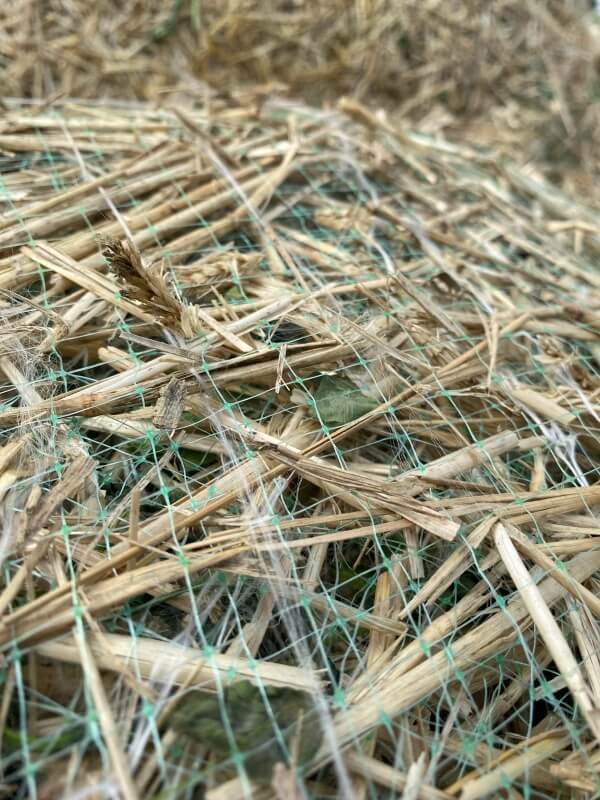One Redditor took to the platform to ask an important question: "Large home builder is telling us this stuff they used for the lawn is biodegradable and shouldn't be removed. True?"
Members of the r/landscaping subreddit were quick to share their experience with what are known as biodegradable straw erosion blankets.


"Our sod had this. It's been 5 years and I'm still finding it in my yard," one user commented. "I'd toss every bit of it."
"Wait till you get this stuck in your lawnmower for the 12th time," another said sarcastically.
Replacing your lawn with native plants will save water — and therefore, money — on maintenance. It will also provide pollinators, which are known to help native plants grow, a healthier habitat. Even if you choose to rewild only small patches of your yard, you will enjoy the choir of bumblebees buzzing, beetles chirping, and butterflies flapping wings in your new garden.
To that effect, straw netting is designed to prevent erosion, slow down water flow, and keep seed in place. According to some of its developers, such as Profile Products, the plastic composing it "gradually disintegrates in sunlight."
"I called one of the sod companies to ask them," a Redditor wrote. "Bottom line is what you'd expect. The only thing that degrades plastic is UV rays. So if you pull all this out and lay it in the sun for a few years, it will degrade mostly into microplastics."
The latter is not the only commenter suggesting that the plastic matting might break down into microplastics.
As few plastic products are recycled, most end up in nature as microplastics, which could have been manufactured in a small size like textile microfibers or, in this case, can be tiny fragments of larger litter like straw erosion blankets.
🗣️ Do you think governments should ban gas stoves?
🔘 Heck yes! 💯
🔘 Only in new buildings 🏢
🔘 Only in restaurants 🍔
🔘 Heck no! 🙅
🗳️ Click your choice to see results and speak your mind
From the Arctic air to seabirds' stomachs to the human brain, there is no place where microplastics won't go.
Hopefully, researchers are now looking into methods to remove microplastics from farm soils or turn plastic waste into higher-value materials. Before such solutions are scaled up, the first step is to reduce plastic waste by avoiding single-use plastics or adopting reusable items.
The discussion on Reddit went on, with some users mentioning a lifespan for this netting of several decades.
"40+ year old home. It's still there. … It's TERRIBLE stuff," one of them explained. "It is strong enough to stick and clog everything to make shoveling exhausting, but thin enough that if you try to pull it up it will just break apart into little bits."
And another to conclude: "This stuff should be taken off the market."
If you are not convinced by the aforementioned tool but are still thinking of rewilding your yard, check out TCD's guide page here for starter's tips plus forum messages and questions on the topic from other readers.
Join our free newsletter for easy tips to save more and waste less, and don't miss this cool list of easy ways to help yourself while helping the planet.









